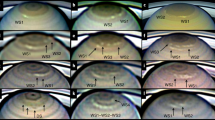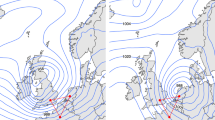Abstract
THE magnetic storm which began soon after 1 p.m. on May 13 presented several unusual features beyond that of almost unprecedented magnitude. As recorded on the Eskdalemuir magnetographs, it showed a “sudden commencement” at 13h. 11/2m. G.M.T. on May 13. The phenomenon known by this name usually takes the form of a sharp change in value of the horizontal components of terrestrial force, frequently including as its first part a temporary drop in value lasting for about a minute, but always exhibiting a rise in value immediately thereafter. In the vertical component the change, when appreciable, is very much slower and is in the direction of the zenith. In the case of the storm now described the change in the north component was too quick for the photographic paper to receive a visible impression of the light spot. On the west component a drop in value is shown at first, amounting to 29γ (0.00029 C.G.S.) and extending over two minutes. There then followed a rise of 94γ, occupying 2½ minutes. On the vertical component the “sudden commencement” assumed an unusual form. There is quite clear evidence of a preliminary increase in value of the vertically downward directed force amounting to 8γ, followed immediately by a reverse change of 31γ, the latter being much more rapid than is generally the case. These preliminary phases having passed, the main features of the disturbance were quickly developed. This is quite in accord with the results of previous experience, which shows that, as a rule, when a “sudden commencement” occurs not far from noon of local time the principal maxima and minima of the storm occur within the next twelve or fifteen hours, but that if the “sudden commencement” occurs late in the day the full development of the disturbance is postponed until the post-meridiem hours of the following day.
This is a preview of subscription content, access via your institution
Access options
Subscribe to this journal
Receive 51 print issues and online access
$199.00 per year
only $3.90 per issue
Buy this article
- Purchase on Springer Link
- Instant access to full article PDF
Prices may be subject to local taxes which are calculated during checkout
Similar content being viewed by others
Author information
Authors and Affiliations
Rights and permissions
About this article
Cite this article
MITCHELL, A. The Magnetic Storm of May 13–17. Nature 107, 392–393 (1921). https://doi.org/10.1038/107392c0
Issue Date:
DOI: https://doi.org/10.1038/107392c0
Comments
By submitting a comment you agree to abide by our Terms and Community Guidelines. If you find something abusive or that does not comply with our terms or guidelines please flag it as inappropriate.



